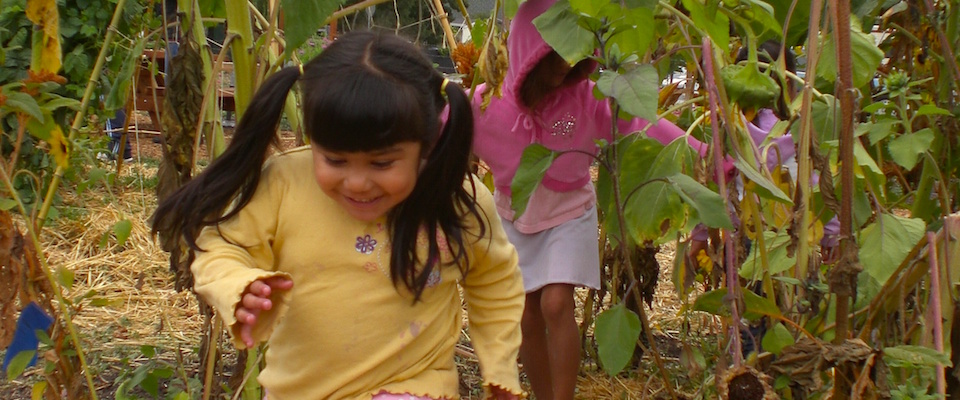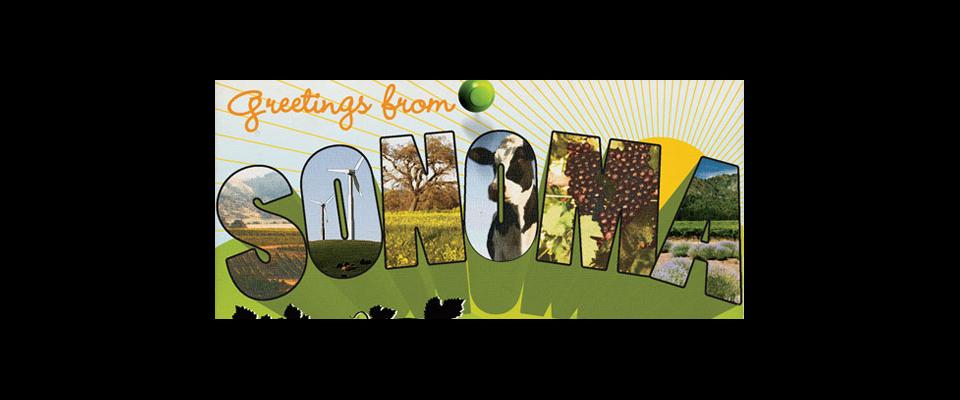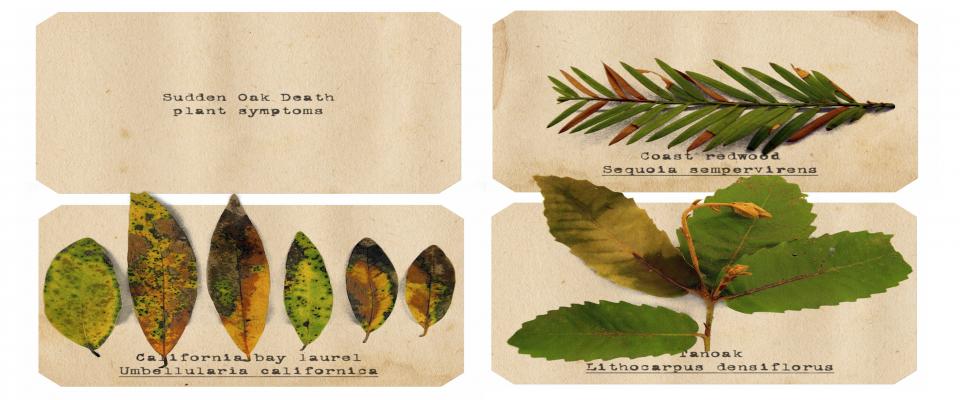LandPaths is a highly successful Sonoma County conservancy-cum-outreach program that fills a variety of needs: maintaining and restoring open space reserves, connecting kids and families to the outdoors through hikes, camp outs and paddle trips, and supporting summer camps and colloquia. Though the group sponsors trips to the Sierra, the main emphasis is on the lush landscapes of Sonoma County: the hardwood forests and upland meadows of the Riddell Preserve, a 400-acre parcel above the Dry Creek Valley, or the old-growth coniferous forests of the organization’s Bohemia Ecological Preserve, located in the Russian River watershed near Occidental.
But about 15 years ago, the nonprofit organization’s staffers became uncomfortably aware of a gap in their client base.

“Sonoma County has a large Spanish-speaking population,” says executive director and UC Berkeley range management graduate Craig Anderson. (Indeed, over 25 percent of Sonoma residents identify as Latino, according to census data.) “But we weren’t seeing any Latinos on our outings. Everyone tended to be white, progressive, and middle to upper-middle class. Our mission is to foster a love of the land, but we were missing a very big part of our community,” he says.
So Anderson and LandPaths mission and strategic director Lee Hackeling, a graduate of Cal’s landscape architecture program, initiated a pilot effort: a hiking trip on Sonoma Mountain led by a Spanish-speaking docent.
“We placed [announcements] in the local Spanish newspaper and on Spanish radio stations,” says Anderson. “Normally when we advertise one of our hikes, 40 or 50 people show up. For this one, we only had two. We realized we were doing something wrong, and that we had to go back to the drawing board.”
So in 2002, LandPaths secured a grant for staff diversity training.
“After that, it was like a lightbulb went off,” Anderson says. “I started to realize—we started to realize—that cultural perceptions of land may be different across different communities. All people have an innate connection to the land, but access is going to mean different things, depending on place of origin.”
At roughly the same time, LandPaths’ staff was becoming intrigued by community-based agriculture. Anderson tried to interest the California Department of State Parks and other agencies in a community farming project, but without success. Then staffers serendipitously learned that a five-acre property on West Avenue in Roseland was in escrow to the City of Santa Rosa. He pitched the idea of an agricultural park, and city officials jumped on board.
“But we still needed a liaison with the community,” Anderson says. “We’d heard about a young activist named Magdalena Ridley who was born and raised in Roseland, and one day I took a walk with her on West Avenue, pointed out the property—it was all fenced with barbed wire and full of trash—told her what we were going to do, and asked if she’d help us. She started crying. She said she had walked by that property her whole life, and no one in the community had ever felt welcomed there, and that of course she’d help us.”
“We realized we were finally on to something. Eight people participated that first year, and now we have 62. People hang on to their plots. We have a long waiting list.”
Ridely taught LandPaths staff that mass media announcements weren’t the way to reach Roseland residents. She organized door-to-door walks to hand out flyers, and she convened neighborhood meetings. When LandPaths officially took possession of the West Avenue property in 2007, says Anderson, staffers cut a hole in the fence and Ridley and a group of school kids planted the first plot. Six weeks later, the farm held its public opening, and 250 people showed up to celebrate.
“At that point everyone on staff looked at each other,” Anderson says. “We realized we were finally on to something. Eight people participated that first year, and now we have 62. And unlike community gardens in predominantly Anglo areas, there is no turnover here. People hang on to their plots. We have a long waiting list.”
Still, there were some awkward moments in getting things rolling. The first farm manager was a superb gardener, says Hackeling, but he didn’t understand many of the nuances that mark the relationship between Latinos and their crops.
“At one point all the corn had been harvested, and he came in and chopped down all the stalks,” Heckerling recalls. “That caused some problems, because many Latinos hold an observance once the corn has been harvested and before the stalks are cut. It’s not considered respectful to just hack them down.”
That all changed, says Anderson, when LandPaths hired Jonathan Bravo to manage Bayer Farm. Born in Mexico, Bravo knew relatively little about farming; in his home country, he had been a mathematics professor. But the people cultivating their plots at the farm didn’t need much in the way of instruction – by mid-summer, says Anderson, each family’s plot usually looks “like a triple canopy rainforest, with one plant supporting another, different plants harvested in succession. They’re incredibly lush and productive.”
But Bravo quickly demonstrated his prowess as an effective and sensitive liaison, not just between Spanish-speaking gardeners and LandPaths, but also families of other backgrounds—Congolese, Vietnamese, Chinese, Bosnian, Laotian—that cultivate plots at Bayer. He also runs educational programs, such as reading hours for young children, and manages the farm’s weekly Friday night potlucks, summer free lunch programs, and the community free range parcel. Not surprisingly, he has also become a formidably competent farmer in his own right.
“I taught mathematics for seventeen years,” says Bravo, taking a brief break from his quotidian duties at the farm, “and I liked it. But this is much more enjoyable. I’m still teaching, but here I’m teaching a sense of community, a love for the land, and I’m getting to work with a wonderful group of volunteers. We have 150 kids, sometimes more, who come to our summer free lunch program. Seeing all those kids eat healthy food. It’s a good feeling.”
The plots are planted to a diversity of crops, with the different varieties often indicating the origins of the families that tend them. On one holding cultivated by a family from central Mexico, cilantro, pepper plants, and tomatillos crowded against tomato plants. Many of the plots are growing amaranth, a plant related to the now-trendy quinoa, and a staple in Mexico for millennia. In plots tended by Asian families, various greens, scallions and long beans are favored. An Eritrean family has grown sorghum, a grain consumed across much of Africa.
“There’s a lot of cross-fertilization going on,” says Anderson. “People from different cultures are trading seeds and produce and sharing recipes. And it’s all an incredible learning experience for staff. For me, I’ll never look at corn the same way. It used to be just corn. But when I’ve walked through some of the plots with people [of Mexican origin] who are growing corn, they’ll point to one variety and say, oh, that’s for atole [a corn-based, usually sweetened drink], and that’s for making tortillas, and that’s for elote [corn on the cob]. I started to understand the deep spiritual connections between corn and the people whose ancestors first farmed it thousands of years ago.”
For Anderson and Hackeling, Bayer Farm’s significance extends beyond assuring some food security for participants and promoting community solidarity;
it points to a new template for city parks. Next to Bayer Farm is a typical urban park: an expanse of lawn, some play structures, a stage and seating area. The entire property was deserted. On the adjacent farm, however, people were coming and going to tend their plots, admire the efforts of one family or the other, catalog the books that are used for the children’s reading circles, or simply chat with one another.
“Most city parks operate on the ‘mow, blow and go’ principle,” observes Hackeling. “Yes, it’s good to have open space – any kind of open space. But when you have a farm like this, people are directly invested in it. They’re here all the time. The activities extend beyond gardening, and there are more and deeper connections – not just people to the land, but to each other.”
LandPaths is now so committed to the community-farm-as-city-park model that the organization is looking for a separate parcel to start a second farm, one that would ultimately house the group’s headquarters. And while Bayer Farm has succeeded in its original mission of providing Roseland residents with greater access to the outdoors through agriculture, it’s had another salutary effect, says Anderson.
“When we just tried to convince people to come out on our hikes we failed miserably,” Anderson says. “But now we have a lot of…folks on our outings, with more signing up all the time. We’ve been able to hire from the community. One-third of our staff is now Spanish speaking. Bayer Farm was the bridge. It didn’t just allow Roseland to connect to the land. It allowed us to connect to Roseland. The farm made it all possible.”





















